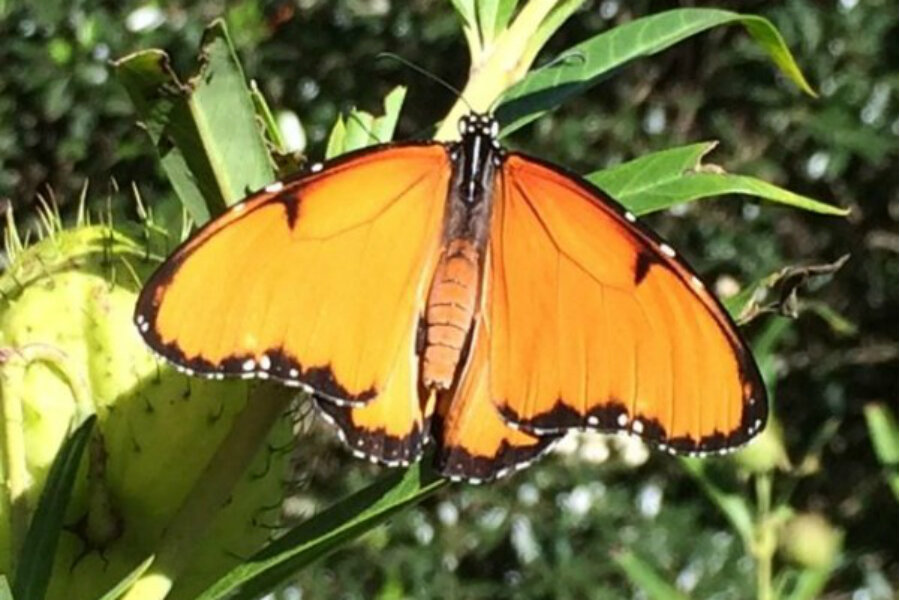How hybrid butterflies evolve in the absence of males
Loading...
What happens to female butterflies when there are no males around? They evolve, according to new research.
A team of Kenyan, German, and British scientists found that two butterfly subspecies in Kenya carry a bacteria that kills males before they hatch. The microbe is so pervasive that it has created a male-free zone, according to a study published Tuesday in the Royal Society journal Proceedings of the Royal Society B. Unable to interbreed, both subspecies must now mate with outside populations to survive.
“It appears that the butterfly's susceptibility to the male-killing microbe is driving the separation of the two butterflies into two true species,” said co-author Richard ffrench-Constant, a professor of molecular natural history at Britain's University of Exeter, in a statement. “These tiny microbes are therefore having a major effect on sex and death in this fascinating butterfly.”
In Nairobi, the African queen butterfly lives in what’s known as a hybrid zone. A hybrid zone is a stretch of habitat where two similar, but genetically distinct species live in close quarters. The proximity leads to some interspecies mating, which produces hybrid offspring.
In the case of the African queen, this process is interrupted by a microbe called Spiroplasma ixodeti. The bacterium is quite common in nature, but research reveals a very nasty side effect: it kills 100 percent of the African queen’s male offspring. According to Professor ffrench-Constant and colleagues, two subspecies of the butterfly carry S. ixodeti.
The bacterium works during the egg stage, killing male larvae before they can hatch. In morbid twist, female larvae often eat their brothers as a first meal. But the African queen isn’t exactly a serial man-eater, researchers say.
“The sisters eating their dead brothers is just a byproduct of the males dying in their eggs,” Dr. ffrench-Constant told The Washington Post. “Many caterpillars eat their own eggs after hatching, so it's probably just a byproduct of that.”
In the absence of males, these butterflies look to outsiders for procreation. As non-native males fly in from other areas, they interbreed with each of the two male-free populations. Those pairings don’t yield male offspring either, and the cycle continues.
“This is like a smoking gun for the way in which species become distinct,” said Walther Traut, a biologist at the University of Lübbek, in a statement. “It is rare that we can find the molecular basis for how species develop.”
Without any males to bridge the gap, the two subspecies can no longer interbreed. As a result, the populations deviate genetically with every generation of outside breeding. Eventually, the two will become entirely separate species, researchers say.
“We tend to think of new species coming about due to environmental changes but here it's clearly the microbe that is driving these two subspecies apart,” ffrench-Constant told The Washington Post. “This means that no males are made in the hybrid zone, and that mating success in the zone is effectively zero, thereby creating a barrier with a new species on either side.”






